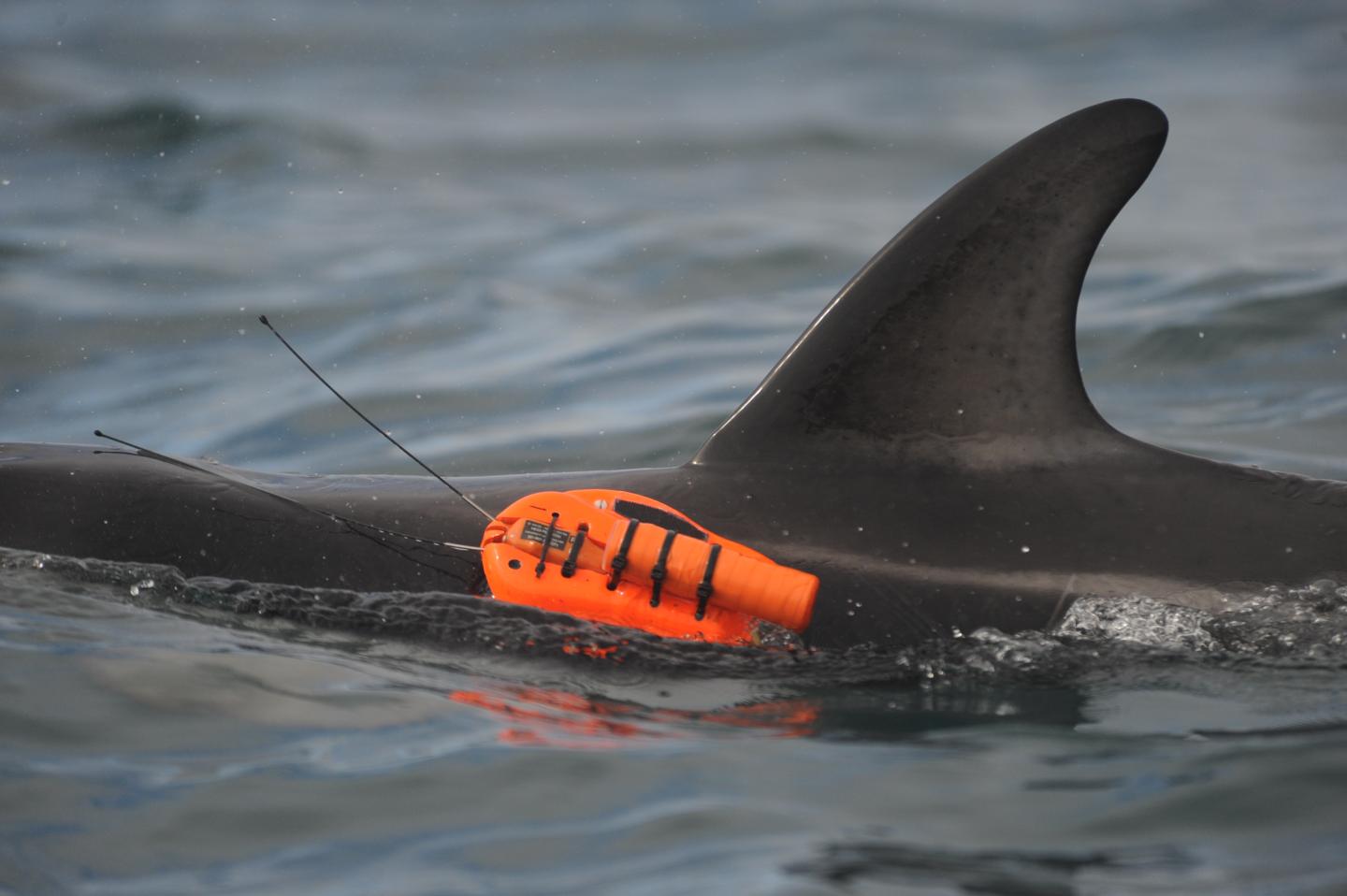A study testing novel underwater camera technology may lead to possible ways to advance conservation and rehabilitation efforts on behalf of wild sea creatures.
A remote cetacean-borne video camera and integrated sensor system (C-VISS) was deployed on eight free-swimming dusky dolphins off the coast of New Zealand from December 2015 to January 2016, collecting a total of 535 minutes of video footage. Recorded social behaviors and environmental parameters included conspecific body condition, mother-calf spatial positioning, affiliative behavior, sexual behavior, sociability, prey and habitat type. The researchers believe that the ability to record behavioral states and fine-scale events from the dolphins’ perspective will yield new insights into the socioecology of small cetaceans.

A wild dusky dolphin off the coast of New Zealand with a new
noninvasive underwater camera attached. Courtesy of the University of
Sydney.
“For the first time, these cameras have given us the opportunity to see what dolphins do on their own terms,” said professor Gabriel Machovsky-Capuska from the University of Sydney. “There were no wildlife crews, no invasive underwater housings — and the dolphins remained largely unaffected by our cameras. This research opens up a whole new approach for capturing wild animal behavior, which will ultimately help us to not only advance conservation efforts but also come closer to understanding wild predators’ and human nutrition, too.”
The cameras were attached to the dolphins via suction cups and deployed using a long pole with the aid of Velcro pads. Each camera system was loaded with memory boards, very high frequency and satellite transmitters, and time depth recorders with a battery life of six hours.
Heidi Pearson, assistant professor at the University of Alaska Southeast, said the research has potential for protecting endangered species by giving scientists a much higher resolution of information than is possible with other methods.
“From the surface, researchers can only see about 10 percent of what is going on in an animal’s life. With these video cameras, we can ‘see’ from the animals’ perspective and begin to understand the challenges they face as they move throughout their habitat,” Pearson said.
The researchers hope to further develop the cameras to test with marine predators including other cetacean species and sharks.
The research was published in Marine Biology (doi: 10.1007/s00227-017-3079-z).
A world-first study testing new underwater cameras on wild dolphins has given researchers the best view yet into their hidden marine world. A research team including experts from the University of Sydney's Charles Perkins Centre and the University of Alaska Southeast trialed the custom-made, noninvasive cameras to capture and analyze more than 535 minutes of such rarely-seen activities as mother-calf interaction, playing with kelp, and intimate social behaviors such as flipper-rubbing. Courtesy of the University of Sydney.